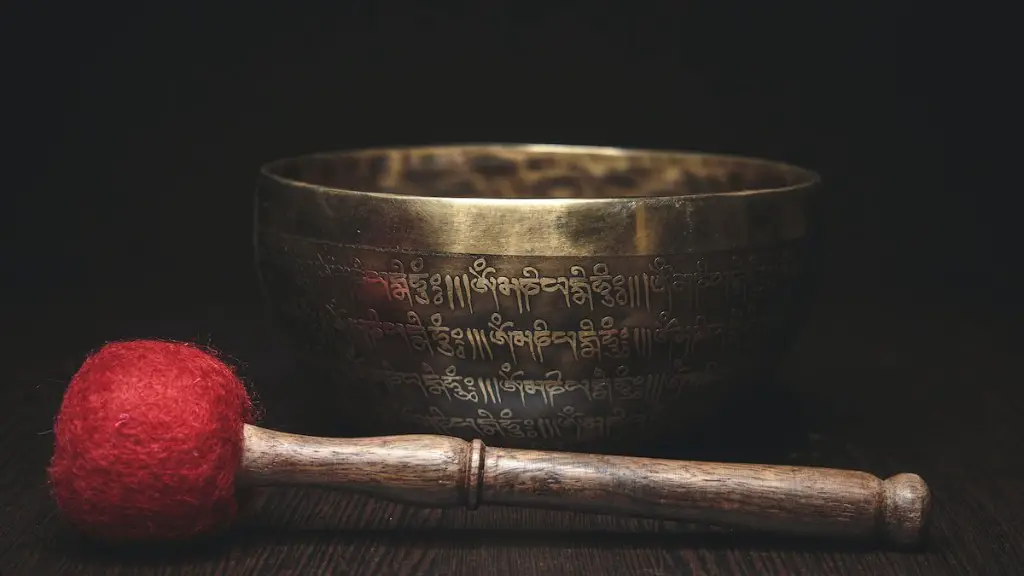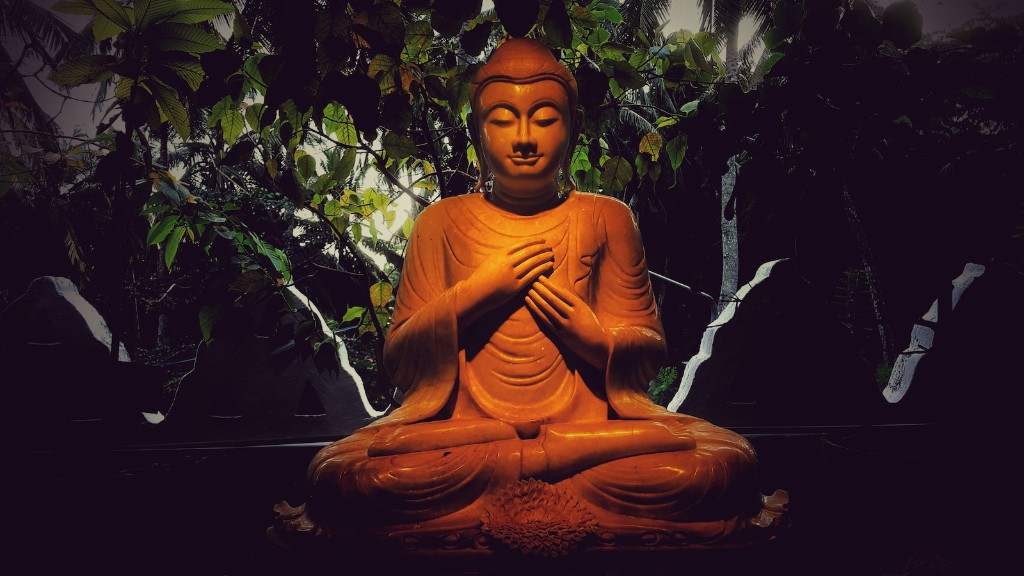First and foremost, it’s important to note that the Buddhist definition of suffering is unique in that it includes both physical and mental suffering. For the Buddha, suffering is caused by our desires and attachments. When we crave things we cannot have or hold on to things that are transient, this gives rise to dukkha, the unsatisfactory and painful feeling that plagues us. Buddhism teaches that dukkha can only be eliminated by cutting off our desires and attachments. This requires leading a moral life, developing wisdom and insight, and cultivating compassion and loving-kindness.
In Buddhism, suffering is an inherent part of life that is to be expected and accepted. It is seen as a necessary part of the human condition, and as something that can be overcome through the Four Noble Truths and the Eightfold Path.
What is suffering in Buddhism?
The Buddha said that all he teaches is suffering and the end of suffering. He did not mean that life is only suffering, but that our tendency to hold onto pleasure leads to suffering when we encounter the fleeting nature of life. Our experiences become unsatisfying and we suffer because we cannot hold onto anything. The Buddha’s teaching is about how to end this suffering by letting go of our attachment to things that are impermanent.
The first level of suffering is called “the suffering of suffering.” This is the suffering that comes from experiencing pain and suffering. The second level is called “the suffering of change.” This is the suffering that comes from the change that is inevitable in life. The third level is called “the suffering of conditioning.” This is the suffering that comes from being conditioned by our past experiences.
What is the Buddhist way to end suffering
The goal of Buddhism is to end suffering, and the path leading to it is the Noble Eightfold Path with its eight factors: right view, right intention, right speech, right action, right livelihood, right effort, right mindfulness, and right concentration. The Buddha calls this path the middle way (majjhima patipada).
Buddhists believe that suffering is part of life, to be expected, and that if a person experiences pain calmly, without becoming emotionally distressed, he can attain greater states of being. Preparation for death is an important part of Buddhism.
Does Buddha believe in suffering?
Buddhism is a religion that teaches that the human life is full of suffering. Buddhists believe that through meditation, spiritual and physical labor, and good behavior, they can achieve enlightenment, or nirvana. Buddhism is one of the largest religions in the world and originated in India over 2,500 years ago.
The Three Poisons are the three main causes of suffering in the world. Greed, ignorance and hatred are often represented by a rooster, a pig and a snake. These three animals are known to cause a lot of suffering and pain in the world.
Did Buddha say to live is to suffer?
The Buddha did not say that life is suffering, but he did say that some pain is inevitable in life. The important thing is to learn to accept it gracefully.
It is natural to want to hold onto things that are important to us. However, sometimes it is necessary to let go in order to move on. Here are some tips for letting go:
Create a positive mantra to counter the painful thoughts.
Do your own work.
Practice mindfulness.
Be gentle with yourself.
Allow the negative emotions to flow.
Engage in self-care.
What are the 5 sufferings in Buddhism
The kleshas are considered to be the cause of suffering in yogic and Buddhist philosophy and are to be actively overcome. The five kleshas are avidya (ignorance), asmita (egoism or I-am-ness), raga (attachment), dvesha (repulsion and aversion), and abhinivesha (fear of death and the will to live).
The noble truth of suffering is that birth is suffering, aging is suffering, sickness is suffering, death is suffering, sorrow and lamentation, pain, grief, and despair are suffering; association with the unpleasant is suffering; disassociation from the pleasant is suffering; not to get what one wants is suffering.
What are the four types of suffering?
There are many different types of pain and suffering, and qualifiers are often used to refer to specific types. Physical pain is the most common type of pain, and is typically caused by an injury or illness. Mental pain is often caused by psychological factors, such as stress or anxiety. Emotional pain is often caused by something that has happened in your life that has caused you to feel sadness, grief, or fear. Psychological pain is often caused by a traumatic event, or by something that has made you feel angry, frustrated, or overwhelmed.
The Eight Sufferings are: Suffering of Birth, Suffering of Old Age, Suffering of Sickness, Suffering of Death, Suffering of being apart from the loved ones, Suffering of being together with the despised ones, Suffering of not getting what one wants, and Suffering of the flourishing of the Five skandhas.
These are all sufferings that we experience in life, and they can be hard to bear. However, we can take comfort in knowing that we are not alone in experiencing them. Everyone experiences these sufferings, and we can all strive to find a way to live with them in a way that brings us peace and happiness.
What is the concept of suffering
Suffering has been proposed to be defined as an unpleasant or even anguishing experience, severely affecting a person at a psychophysical and existential level. Pain and suffering are considered unpleasant experiences that can cause physical and emotional distress. Although suffering is often caused by physically painful stimuli, it can also be caused by psychological or social factors. Suffering is a complex and multi-dimensional phenomenon that is often difficult to quantify or measure.
The lesson on death and suffering that Buddha taught Kisa Gotami through an activity is that death and suffering are common to all. He said that there was no way by which one could avoid death or suffering. He compared it to an earthen vessel made by a potter, which would sooner or later die.
What is the root of all suffering?
Buddha taught that the root of all suffering is desire, tanhā. This comes in three forms, which he described as the Three Roots of Evil, or the Three Fires, or the Three Poisons. These are lobha (greed), dosa (hatred), and moha (delusion). These are the fires that burns within us and causes suffering. To extinguish these fires, we need to practice the Noble Eightfold Path.
Pain and suffering can be difficult to quantify, but it is important to consider all forms of pain and suffering when evaluating a personal injury case. Some examples of pain and suffering include physical pain, physical impairments, disfigurement, loss of quality of life, loss of enjoyment of life, grief, depression, and anger. It is important to work with an experienced attorney to ensure that all forms of pain and suffering are taken into account when pursuing a personal injury claim.
What is the main cause of suffering
There are many things that cause us suffering and pain Malice and disappointment are “the biggest source of our suffering Another one is the lack of noble qualities Our unhealthy and evil ways also give birth to so many troubles and sufferings.
Nirvana is the goal of Buddhism and is believed to be attainable only with the elimination of all greed, hatred, and ignorance within a person. Nirvana signifies the end of the cycle of death and rebirth.
Warp Up
In Buddhism, suffering is a result of attachment to things that are impermanent. This includes attachment to our own thoughts and emotions, as well as attachment to material things. The Buddha taught that by let go of our attachments, we can end our suffering.
Buddhism teaches that suffering is caused by our own actions and our own desires. We can end our suffering by following the Eightfold Path and by living in accordance with the Four Noble Truths.



